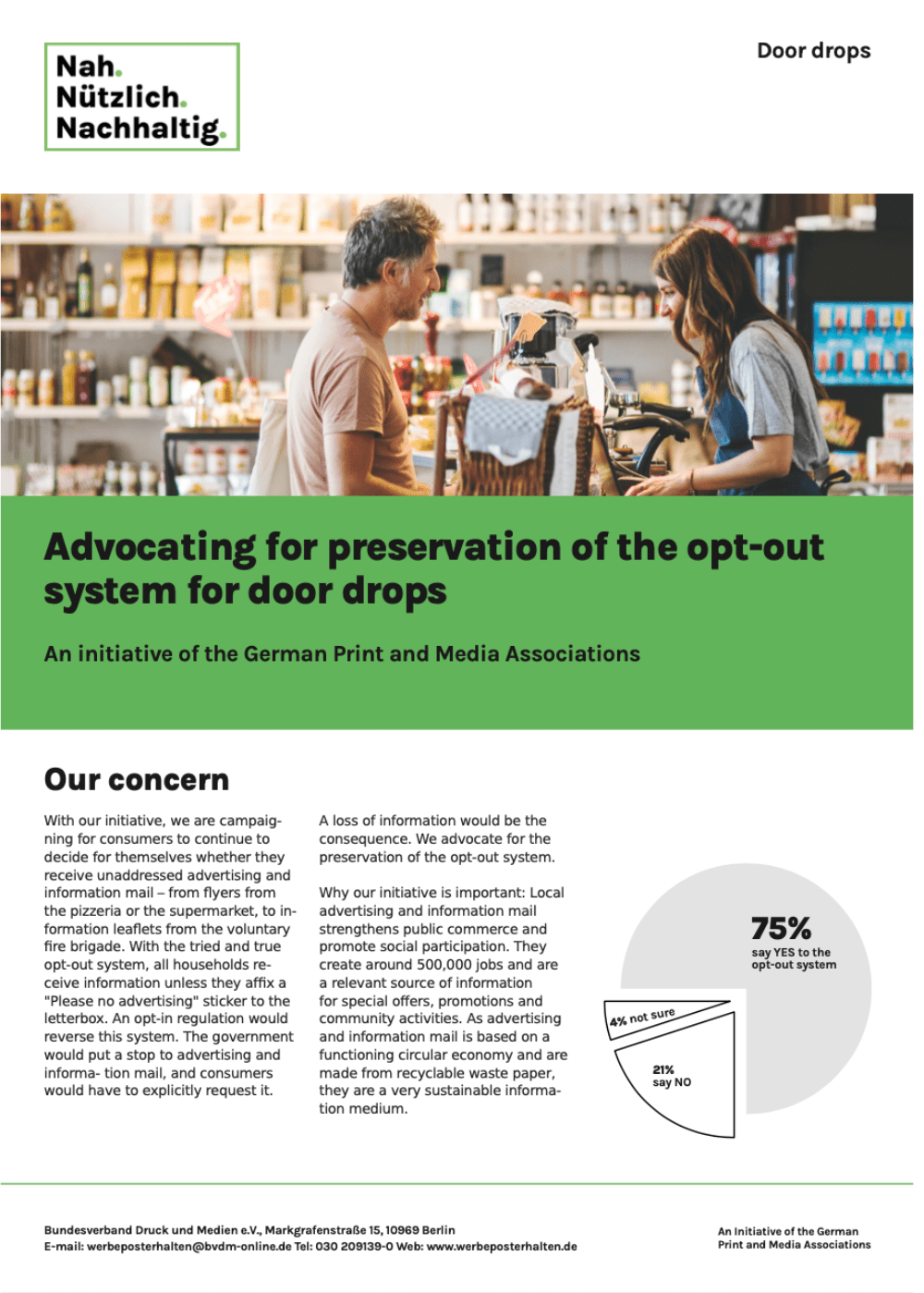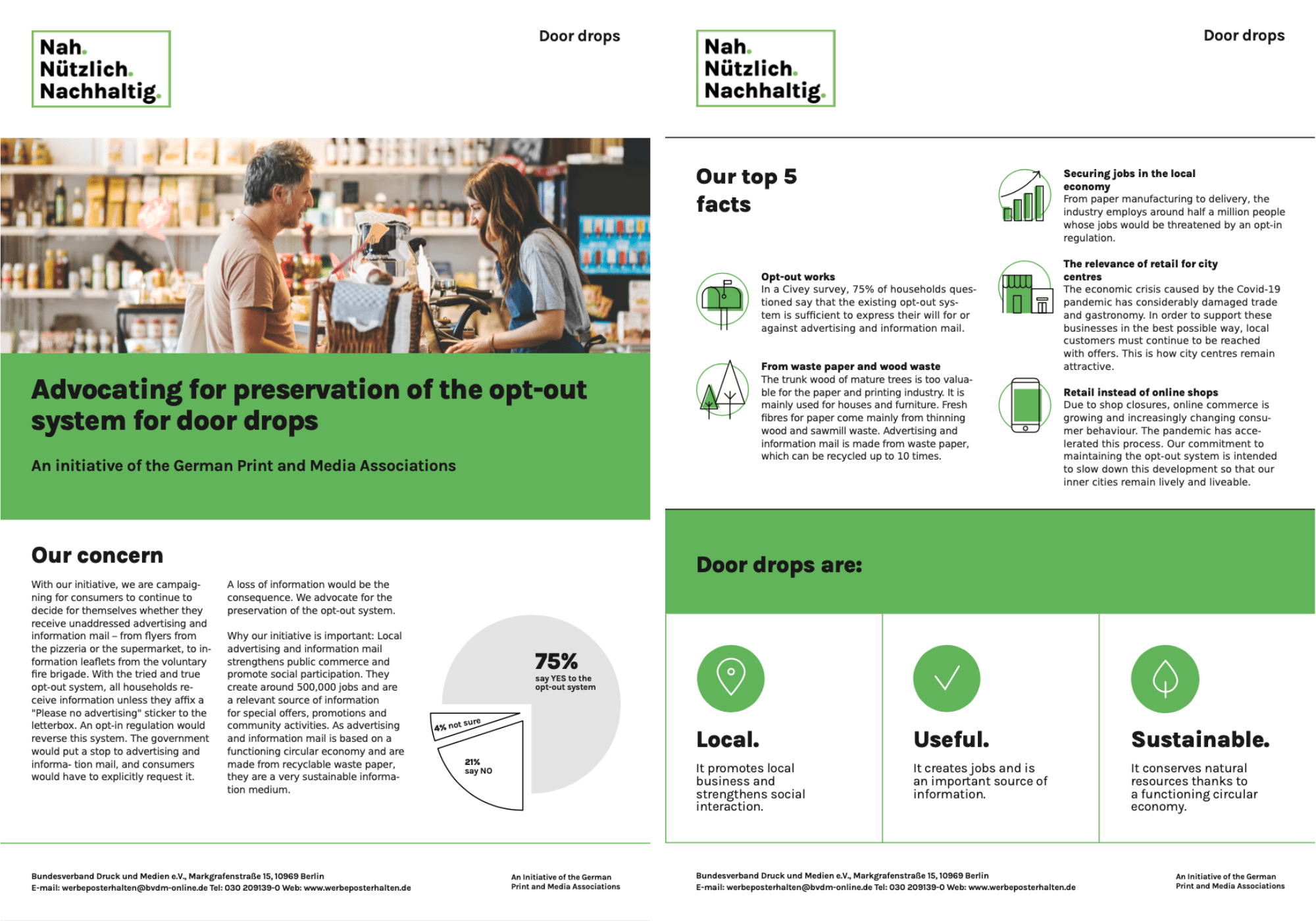Check the facts

Rethinking Common Preconceptions
- Bifa Environmental Institute 2020
- vdp/bvdm-Umweltkennzahlen Offsetdruck;
Water Practice, a practical guide to saving water - vdp/bvdm environmental indicators offset printing;
https://www.energie-umwelt.ch/elektrizitaet/1147
- FH Cologne in cooperation with MEDIA Central, “The Prospectus as Brand Ambassador.” 2020, S. 6
- Representative Civey survey, 2021
- TU Darmstadt, Prof. Dr.-Ing. Samuel Schabel, Department of Paper Milling and Mechanical Process Engineering
1,2 Representative Civey survey, 2021
3 EHI study Stationary Retail Germany 2021
We say: Incorrect!
In the Civey survey, 75 % of households say they are satisfied with the existing opt-out system. This specifies that all citizens receive advertising and information mail on a voluntary basis. Those who do not wish to do so can easily reject delivery with a “”No advertising, please”” sticker on their mailbox.1
In online shopping in particular, impulse purchases are more prevalent – the product is often just a click away. Advertising mail, on the other hand, provides guidance and offers opportunities for comparison in an overabundant consumer world. Doordrops provide information about special offers and promotions, enabling consumers to make targeted purchases in the store – thereby saving money and time.
- Representative Civey survey, 2021
Our factsheet
Here you can read the most important facts about our initiative at a glance.
Further questions?
Please feel free to contact us. We look forward to receiving your enquiry. For all questions and concerns, you can contact us by phone, mail or e-mail.
Bundesverband Druck und Medien e. V.
Markgrafenstrasse 15
10969 Berlin
Germany

